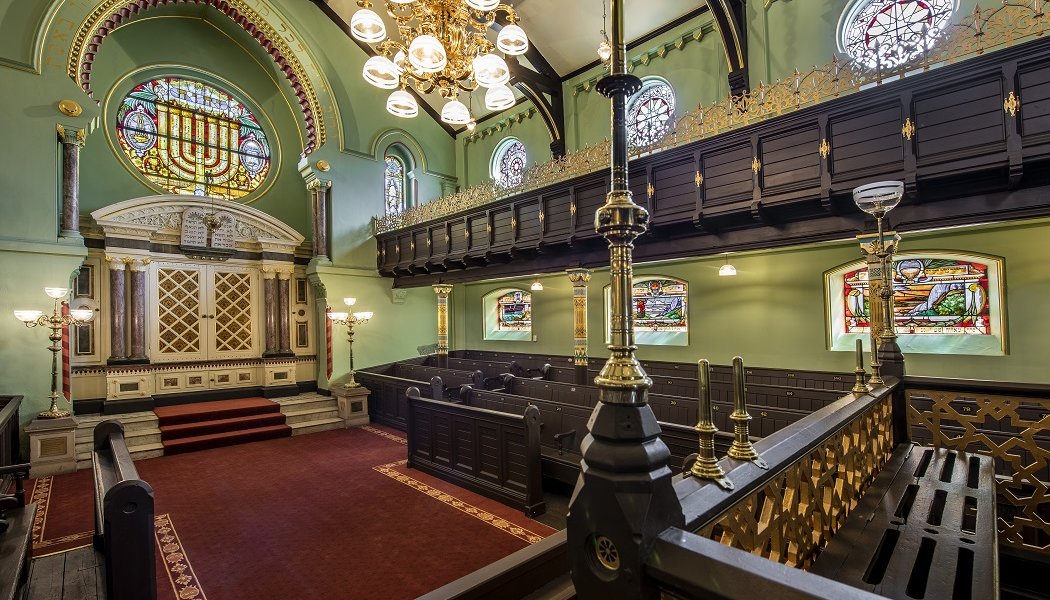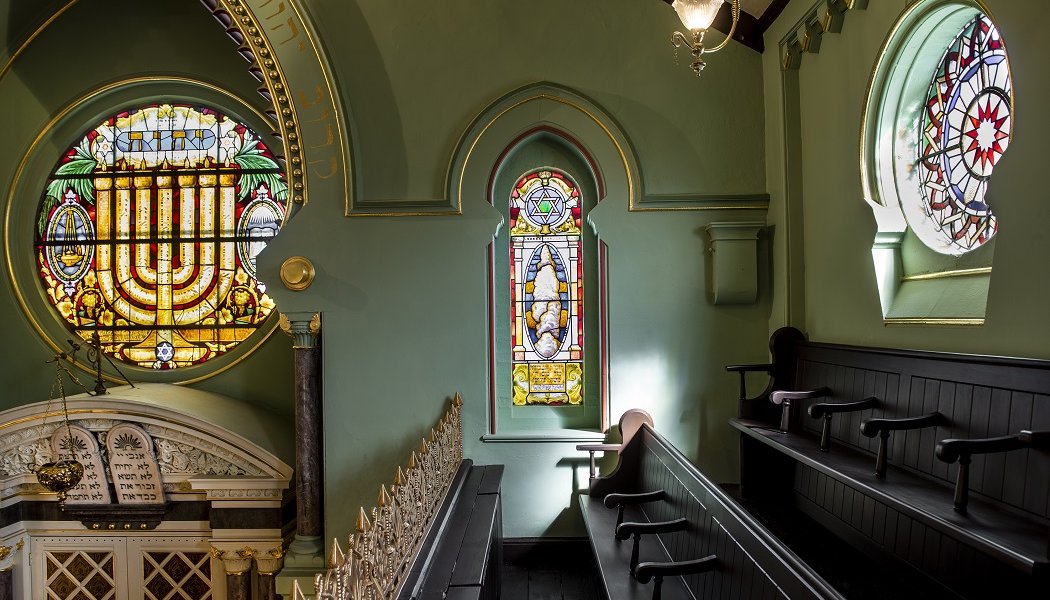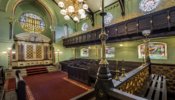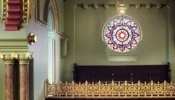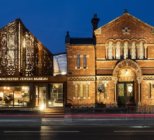For the thousands of tourists who arrive in Manchester city centre on any given day, it’s around a half hour walk north to the former textile-producing industrial heartland of Cheetham Hill.
Without planning a visit in advance, it has never been likely that too many members of the public would stumble across a Grade II* listed synagogue and attached museum in this particular Mancunian enclave.
This, in part, was the challenge a £6 million redevelopment project at Manchester Jewish Museum set about overcoming when the attraction closed its doors around two years ago.
With a concept finetuned over a decade of planning – to transform the site into a vibrant hub capable of drawing in visitors from all backgrounds – and support from the National Lottery Heritage Fund, the museum joined forces with architecture firm Citizens Design Bureau to craft a venue like no other in the city.
The result, according to Max Dunbar, Manchester Jewish Museum CEO, is a “contemporary, thoughtful, welcoming new building which fuses the old with the new and which complements and integrates so well into our local area”.
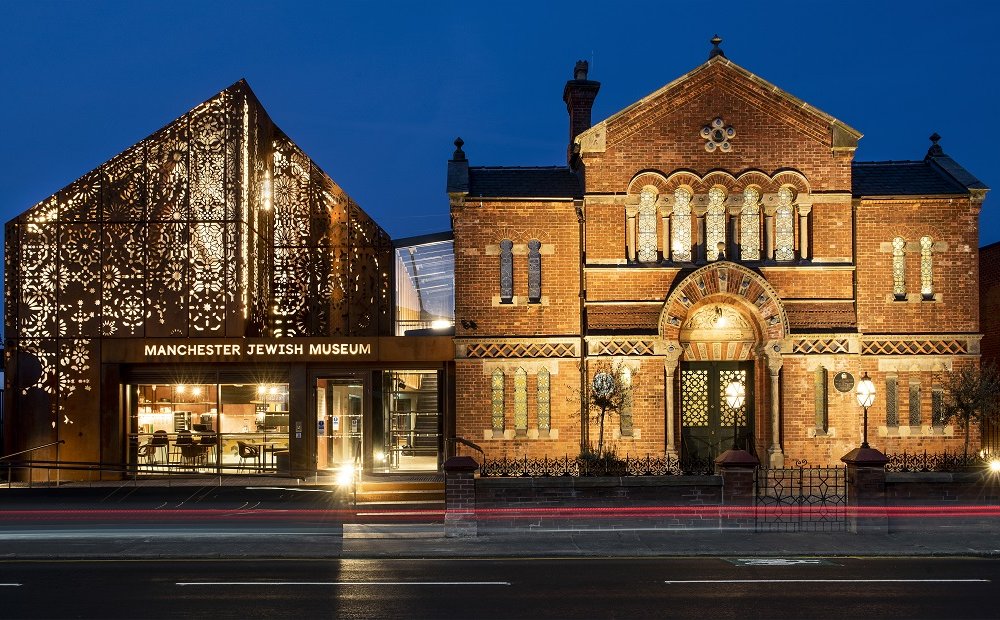
When the reimagined museum welcomes its first visitors on 2nd July the spaces inside will be unrecognisable compared to the institution that closed just 24 months ago – aside from the synagogue, which has been meticulously restored.
A major new extension has doubled the size of the museum, enabling the addition of a new gallery space, vegetarian kosher-style café, shop and collection store.
As the venue’s size has increased so too has its accessibility, with lift access and hearing induction loops now in situ throughout the site. This ensures that all visitors can explore both the shiny new visitor facilities and the existing building, which are now linked by an atrium.
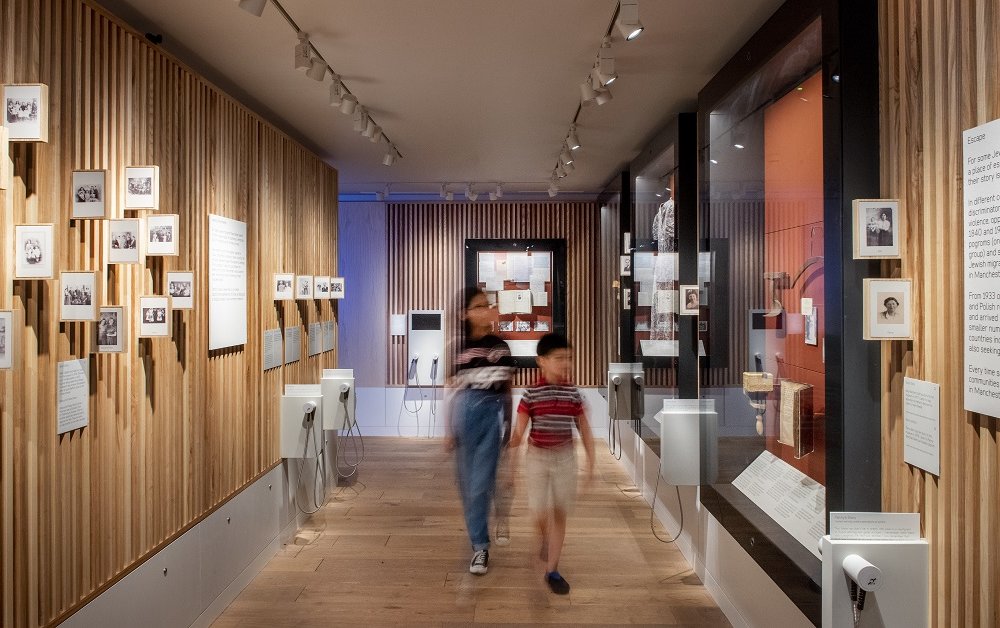
Audience advancement
While the museum is understandably special to the city’s Jewish communities, a priority for the institution upon reopening is to attract broader audiences to the site which houses Manchester’s oldest surviving synagogue.
Extensive repairs and restoration now mean that the religious structure built in 1874 is back to its best, courtesy of processes including forensic paint analysis to facilitate the reinstatement of its original 19th Century decorative scheme – banishing layer after layer of decades old brown gloss and magnolia paint to the past.
Preventing the synagogue from tumbling into disarray was a key goal of the overall project, but making its visual presence less incongruous was also of paramount importance in the effort to make the site feel more welcoming to all.
To this end, the sizeable extension has created a new entrance in an attempt to remove the preconception of the site serving solely as a faith-focussed museum.
Katy Marks, director of Citizens Design Bureau, believes the reimagined museum truly fulfils this brief and now “serves as an architectural expression of the idea that we have more in common than that which divides us and we’re excited to finally share the building with everyone”.
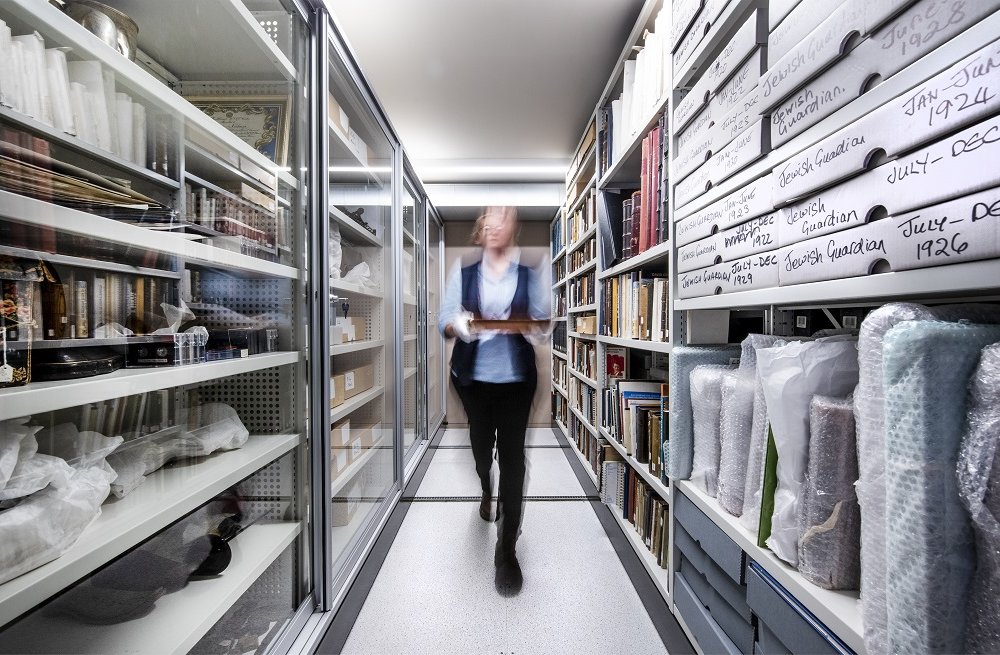
David Renwick, National Lottery Heritage Fund’s director for the North of England, echoes this, noting that the £6 million scheme has yielded an “amazing building, with collections extended, enhanced and preserved for years to come”.
Investing in such projects, he adds, “ensures that locals and visitors can learn more about their diverse community’s rich heritage” and can “play a huge role in bringing people together and creating a sense of pride in people’s hometowns and cities, and in turn boosting the local economy”.
Carbon conscious
As is inevitable for a site housing a 19th century synagogue, energy efficiency was not at optimum levels prior to the redevelopment. The historic religious building was thermally leaky and very expensive to run.
The addition of a ‘high-performance insulation quilt’ into the old roof, however, means the ageing structure’s overall energy usage and resultant carbon intensity has dropped by around 20%.
A thermally massive double floor slab, which incorporates a fresh air plenum, has also been installed in the new extension to pre-heat air capable of naturally ventilating the listed synagogue.
The decision to restore the 1874 structure rather than demolishing it and starting the entire site from scratch, too, has saved an estimated 250 tonnes of carbon dioxide equivalent.

With almost all of the project’s scheduling having been buffeted by the pandemic, Max Dunbar says he “cannot believe the opening day is finally here” after what he describes as a “long labour of love” to redevelop the Cheetham Hill site.
“We are so grateful for all our contractors, builders, funders, staff, volunteers and the local community who have worked both together and individually and in often challenging circumstances to create a brand-new Manchester Jewish Museum that is for everyone,” the museum’s CEO concludes.
As of this Friday, Manchester Jewish Museum will open to the public seven days a week between 10am and 5pm.


